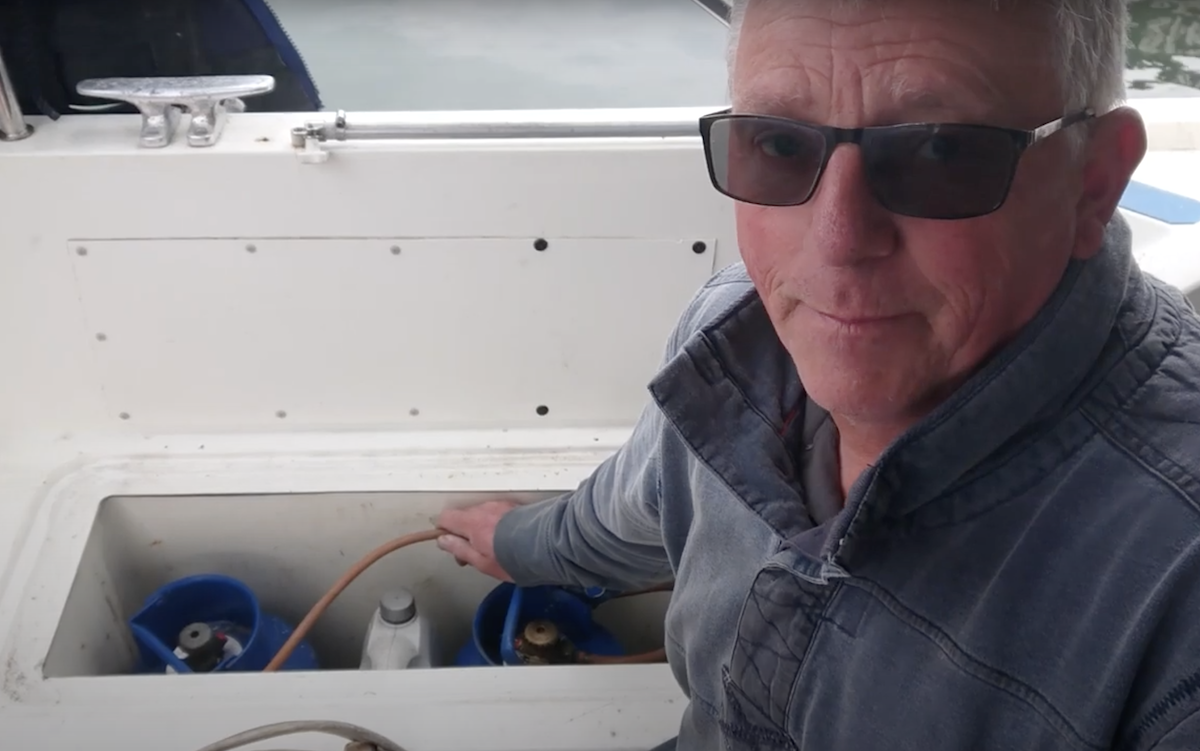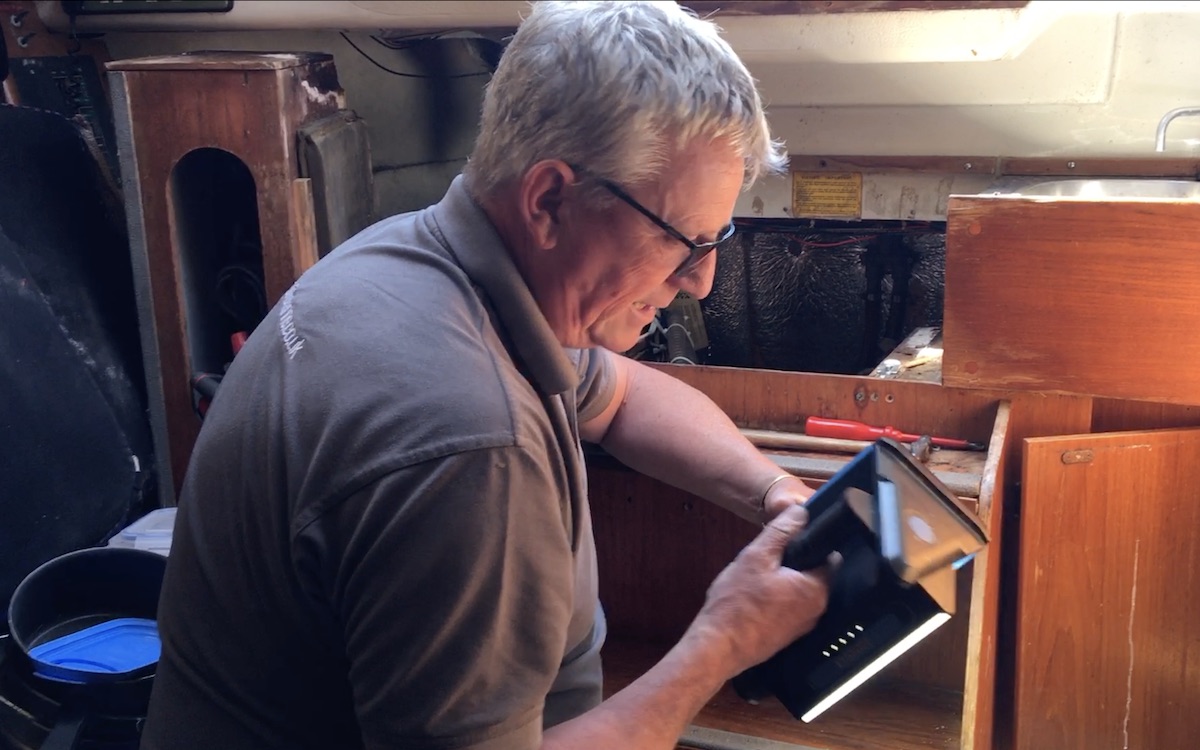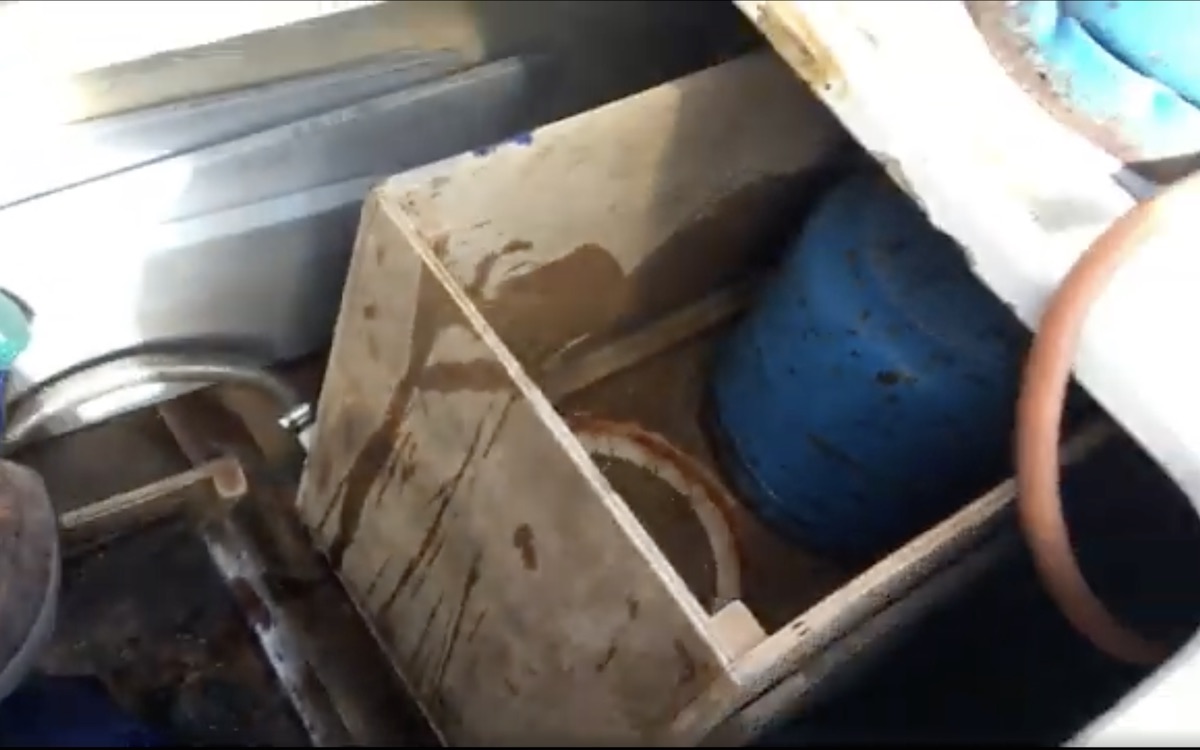The serious danger of the wrong diesel heater exhaust fitted
Very cheap exhausts bought online and fitted to marine diesel heaters risk fires and fatal fumes, warns a marine surveyor and former boatbuilder.
The forum at Practical Boat Owner’s sister site YBW.com is full of comments about the budget diesel heaters and systems available online.
“Personally I’d not put anything on my yacht that hasn’t got the correct CE or new UK mark.” warns Ben of Ben Sutcliffe Marine.
“There are reports every year about carbon monoxide poisoning within the magazine news sections and on the Marine Accident Investigation Branch (MAIB) website that should be heeded.
“One of the problems apart from poor quality and lack of proper safe installation instructions are most are sold with a “truck” exhaust and not a marine quality sealed unit.
“Even if you are tempted to buy one please don’t fit one of these lethal exhausts.”

The £8 “truck” exhaust – beware cheap exhausts like this
Serious fire risk
After surveying “at least” three yachts last year where fires had been caused by diesel heater failure, Ben, who is based in South Wales but covers most of the UK, bought an £8 diesel heater exhaust from the internet to take a closer look.
The Yacht Brokers, Designers & Surveyors Association (YBDSA) surveyor said: “Certainly in the last couple of years in the UK we’ve had a number of deaths linked to cheap installations of diesel heaters where people, like myself, have bought exhausts off the internet for £8, a genuine piece of Chinese supply, which doesn’t say it’s not to be fitted in a yacht.
“At first glance it looks like quite a nice little exhaust but it’s the exhaust that’s the big problem with a lot of these diesel heater installations.
“I’ve seen them on Webasto, Wallace and Eberspacher units where people have thought, rather than pay £70 or £80 for the brand’s exhaust, I can buy this for a tenner.
“A closer inspection shows it’s as bad as I feared.
“Basically there’s a little hole and that is meant to be at the bottom when it’s fitted in a truck.
“When it’s in a vehicle the exhaust is blown through, any water vapour it collates will drop out this hole, now, in a yacht any vapour that drops out of this hole is going to be carbon monoxide or exhaust gases and they’re not able to escape being in your cabin or your locker.”

“A really bad installation”
“Not the slightest bit airtight”
Ben experimented by blocking the exhaust’s holes and filling it with water.
He discovered the unit was “not the slightest bit airtight”:
“Water was dripping out through the casting, everywhere, and most alarmingly even through the fitting.”
Boat owners with diesel heaters are urged to check the exhaust system to ensure these cheap, possibly dangerous “truck exhausts” are not fitted. Ben said: “If you have – get rid of it.
“Buy yourself the proper exhaust which is a stainless steel tube, and clearly says it is suitable for marine use.
“Then make sure that everything from the diesel heater to the exhaust discharge has the proper insulated fitting.
“Make sure, on top of that, you’ve got an aluminium conduit as well, so it should double insulated.
“The diesel heater should be fitted on a non-flammable FAME system away from anything flammable.
“Please make sure the fuel line is an ISO marked 7840 diesel line, that there’s a stop tap at the tank for it, and that where it’s taking the air from to run the thing, there’s no petrol or anything else flammable gas.
“I shouldn’t need to say this, but it’s amazing the things I find when I do my surveys.”
Ben recommends fitting a carbon monoxide alarm in every sleeping area on board.
(If you click on a product link then we may receive a small amount of money from the retailer when you purchase the item. This doesn’t affect the amount you pay.)

Marine surveyor Ben Sutcliffe-Davies
The diesel heater exhaust checklist
- Check your diesel heater exhaust system – if a cheap exhaust is fitted – get rid of it
- Buy a stainless steel tube exhaust, clearly marked for marine use – look for the CE or new UK mark
- Ensure everything from the diesel heater to the exhaust discharge has an insulated fitting
- Check there is an aluminium conduit as well – making it double insulated.
- Site away near anything that’s flammable; it should be at least 2 to 3 inches away from the turn of the deck, GRP deck, wooden deck.
- The heater must be secured on a metal or non-flammable bracket or mount
- The fuel line should be an ISO marked 7840 diesel line
- Ensure there’s a stop tap at the tank
- Make sure there’s no petrol or flammable gas along the air supply to run the heater

A cheap exhaust fitted in lieu of the brand version on a Webasto system
Article continues below…
Dangerous gas hoses – make sure your boat’s rubber piping doesn’t look like this!
When did you last check your gas hoses? In this video, PBO expert and marine surveyor Ben Sutcliffe-Davies, discovers something…
Project Boat survey revealed – old seacocks, dangerous gas, leaks and more…
A boat survey is really important for anyone buying – or even acquiring – a secondhand boat. Last month we…
Dangerous gas locker – how to do the bucket test to check your locker is safe
Is your gas locker safe? If it looks anything like this one then it’s not… In this video, marine surveyor…
“Lack of awareness of CO among boat users”
The CO Research Trust (formerly known as Gas Safety Trust) was set up to reduce the incidents of death and serious injury from carbon monoxide (CO) poisoning.
Adrian McConnell, head of operations, said of Ben’s warning: “This is an important safety issue.
“Our message to boat owners is to invest in safety and not to cut corners when it comes to maintenance and repairs.
“In addition to the fire risk, any inappropriate parts which are fitted can lead to incomplete combustion of the fuel.
“This is the leading cause of carbon monoxide (CO) exposure.
“Any work or repairs must be carried out by a suitably qualified person.
“There is concern about a lack of awareness of CO among boat users.
“While it is known that diesel fuel combustion produces lower concentrations of CO than gasoline engines, these emissions could certainly generate lethal concentrations in an enclosed space, such as a boat.
“Boats have small living spaces.
“However, they are also sealed containers, essential for keeping water out, but also equally effective at retaining gases and fumes.
“Many boats have multiple potential sources of fire and CO.
“They may also have multiple engines and appliances for cooking, heating and lighting.
“Some of these will be powered on or in use whilst occupants are sleeping.
“We have a much better understanding now of how prolonged exposure to low level CO poisoning can have a serious impact on health.
“We are also concerned that there may be under reporting of CO incidents, particularly in the boating community.
“The Trust have recently funded a project which is being carried out by the London Fire Brigade (LFB) to help provide a more informed picture of CO levels on houseboats in London.
LFB will carry out 1,758 visits to houseboats, to help raise awareness of the risks of CO and fire.
“The findings of this project will be used to influence advice given to boaters by boat regulators.”
“Significant risk of liability”

A mother and daughter suffered fatal carbon monoxide poisoning on board the motor cruiser Arniston in Lake Windermere, Cumbria in 2013 as a result of fumes caused by a portable generator, which had been modified by the addition of an exhaust
Ross Wombwell, head of technical services at British Marine, said: “If it is on a boat from new then it would come under the RCR certification of the boat and as such the product, as exampled by Ben, would not comply and therefore the vessel wholly would be in breach.
“This type of component however is not listed under the Recreational Craft Regulations (RCR) as a component that must be certified independently.
“This product sold independently therefore is not in breach of the RCR, however things that don’t fall within the scope of the RCR may well fall within the scope of an alternative regulation, anything that is not covered by any regulation is still covered by the General Product Safety Regulations and must be safe to use.
“This product therefore would be legal to sell if it’s fit for purpose for its advertised use.
“Which it may well be in a lorry, or caravan and sited externally, but I’m not an expert in other types of regulation and couldn’t comment.
“However I would argue that it should not be advertised for use in boats as it’s obviously dangerous in this situation.
“And I would also warn that if a member of the public installs a dangerous system and it affects anyone else, either whilst in their possession or subsequent owners then there is a significant risk of liability, as seen in the prosecution of the vessel owner following an incident in Lake Windermere in 2013.”






